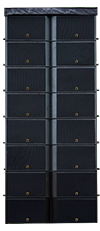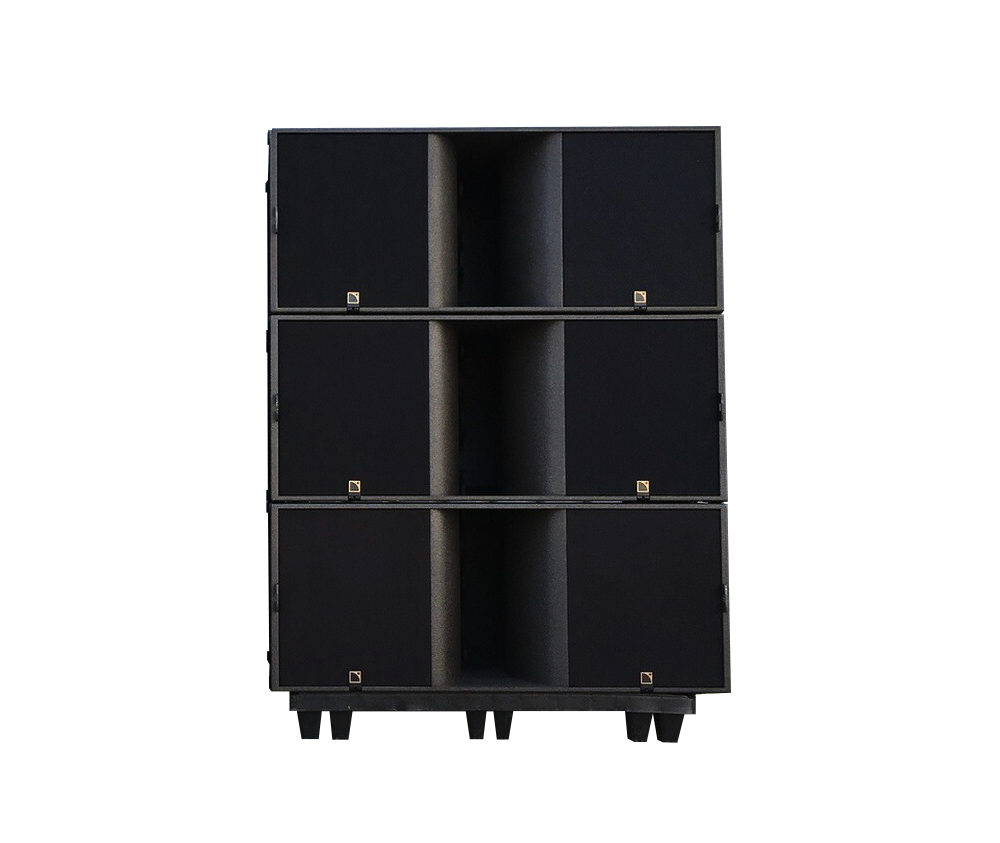How does a teleprompter work: A complete guide for beginners
Apr 04, 2025Have you ever wondered how news anchors, public speakers, or video presenters deliver their lines so smoothly without missing a beat? The secret lies in a powerful yet often overlooked tool - the teleprompter. So understanding how a teleprompter works can significantly improve your delivery and confidence.
In this guide, we'll break down the mechanics, types, and best practices of using a teleprompter, helping you master this essential broadcasting tool with ease.
What are the different types of teleprompters?
Teleprompters come in several forms, each designed to suit different speaking environments. The three primary types include camera-mounted teleprompters, floor or stand teleprompters, and presidential teleprompters. Understanding their functions can help you choose the best teleprompter for your needs.
1. Camera-mounted teleprompters
A camera-mounted teleprompter is commonly used by vloggers, podcasters, and interviewers who need to read their scripts while looking directly into the lens. This setup reflects text onto a special piece of glass placed in front of the camera, allowing the speaker to maintain eye contact with the audience.
It is compatible with smartphones, tablets, and professional cameras, making it a versatile option for virtual presentations, online videos, and pre-recorded speeches. Paired with a microphone, it provides a professional setup for interviews and online content creation.

Camera-mounted teleprompters
2. Floor or stand teleprompters
Floor teleprompters are positioned at an angle on the floor, at the back of a room, or mounted on a stand. Unlike camera-mounted versions, this type requires the speaker to occasionally glance down, which may slightly divert their gaze from the audience.
To use it effectively, presenters must be comfortable with teleprompter reading techniques to maintain a natural and engaging speech. Once mastered, floor teleprompters help deliver speeches with a steady, confident flow.

Floor or stand teleprompters
3. Presidential teleprompters
Presidential teleprompters are often seen at high-profile events, such as political speeches or corporate conferences. Instead of being placed in front of a camera, they consist of transparent reflective screens mounted on slim poles positioned on both sides of the speaker.
This allows presenters to read from either screen while maintaining an engaging presence with the audience. Widely used by public figures, these teleprompters ensure a seamless and professional delivery for on-stage speeches.

Presidential teleprompters
How does a teleprompter work?
A teleprompter operates by displaying a script on a transparent screen placed in front of the speaker. This allows the presenter to read the text while maintaining eye contact with the audience, creating a natural and engaging delivery. The text scrolls at an adjustable speed, enabling the speaker to match their pacing for a smooth and confident presentation.
Traditionally, teleprompters have been widely used in broadcasting, news reporting, and public speaking to enhance speech delivery and reduce performance anxiety. They help speakers stay on track without the need for memorization, ensuring a seamless flow of information.
With modern innovations, digital teleprompters have become more accessible, making them a valuable tool for professionals beyond television studios. Whether used in corporate meetings, virtual presentations, or live speeches, teleprompters enable speakers to deliver clear, focused, and compelling messages with ease.
Who operates the teleprompter?
The operation of a teleprompter can vary depending on the setup and the speaker’s preferences. In some cases, the speaker controls the scrolling themselves, while in others, a dedicated operator ensures a seamless experience.
- Self-controlled teleprompters: Many speakers use a foot pedal to control the speed of the text scroll. This technique allows for greater flexibility, as the presenter can adjust the pacing in real time to match their natural speaking rhythm.
- Teleprompter operators: For professional events, broadcasts, or live speeches, a teleprompter operator is often responsible for setup and text control. The operator ensures the screen is positioned correctly, the text remains visible, and the scrolling speed aligns with the speaker’s delivery.
- Automated teleprompter applications: With advancements in technology, many speakers now rely on teleprompter apps or voice-activated systems. These applications use speech recognition to automatically adjust the text scroll based on the speaker’s reading pace.

Who operates the teleprompter?
Key components of a teleprompter
A teleprompter is composed of two main components that work together to ensure a smooth and natural speech delivery. The first is a teleprompter glass panel, which is placed in front of the camera lens and features a special coating that allows light to pass through while also reflecting the script displayed on the monitor. This design enables the speaker to read the text clearly without obstructing the camera’s view or revealing the script to the audience.
The second key component is the monitor, which is positioned below or behind the glass panel. It displays the script in a mirrored format, allowing the text to be properly reflected onto the glass. By combining these elements, a teleprompter helps speakers maintain eye contact with their audience while delivering their speech with confidence and precision.
What materials are used to make a teleprompter?
A teleprompter is constructed using several key materials, each playing a crucial role in its functionality and durability. The most important component is the glass or acrylic panel, which acts as a beam splitter mirror.
This specialized material reflects the script for the speaker while remaining transparent to the camera, ensuring an unobstructed view for recordings or broadcasts. Supporting this panel is a metal frame, which provides stability and secures the glass or acrylic in place.
In addition to these structural elements, a monitor is used to display the script, while a computer or tablet controls the display and allows adjustments to the scrolling speed. Some teleprompters also include optional accessories such as a tripod for mounting, a remote control for adjusting text flow, and a lens hood to prevent unwanted reflections.
Together, these materials and components create a reliable teleprompter system, enhancing the clarity and effectiveness of on-camera presentations.
Applications of the teleprompter in various fields
Teleprompters are widely used across multiple industries to enhance speech delivery, improve accuracy, and maintain audience engagement.
In television broadcasting, news anchors rely on teleprompters to read scripts smoothly while maintaining eye contact with viewers. This tool is essential in live news reporting, ensuring clarity and professionalism.
Similarly, in public speaking, politicians and keynote speakers use teleprompters to deliver speeches confidently without needing to memorize long texts, allowing them to engage naturally with their audience.
The entertainment industry also benefits greatly from teleprompters. In film and television productions, actors use them to recall lines during shoots, especially for long monologues or live performances. In corporate settings, executives utilize teleprompters for important presentations at conferences and meetings, ensuring a polished and well-structured delivery.
Additionally, musicians and performers use teleprompters during live concerts or stage productions to follow lyrics and scripts without disrupting their performance. They are also a staple at award shows and celebrity interviews, helping presenters and entertainers maintain a natural flow while speaking.

Applications of the teleprompter in various fields
Tips for using a teleprompter effectively
A teleprompter can help you deliver a smooth and professional speech, but improper use may make your presentation sound robotic. To maintain a natural flow and engage your audience, consider the following tips:
Focus on the script
While a teleprompter allows you to read word for word, it’s essential to write your script in a conversational tone. Avoid overly formal or complex sentences that may feel unnatural when spoken aloud. Instead, incorporate natural pauses, casual expressions, and occasional improvised interactions with your audience. This approach helps create a more engaging and authentic presentation, making your speech feel less scripted.
Adjust the display text for better readability
Most teleprompter apps allow customization of text size, font style, background color, and scrolling speed. Adjust these settings to suit your reading pace and comfort. Using a font size that’s easy to read and ensuring the text is properly displayed on the teleprompter glass can significantly enhance your delivery. Proper text formatting allows for smoother pacing, reduces strain, and helps maintain a confident speaking style.

Adjust the display text for better readability
Engage with the audience while using a teleprompter
Maintaining eye contact with your audience, whether on video or in person, is crucial for keeping them engaged. Avoid fixating solely on the teleprompter screen, as this may make you appear disconnected or unenthusiastic.
Instead, glance at the text naturally while occasionally looking at your audience or the camera. This interaction makes your speech more dynamic and helps build a stronger connection with your listeners.
Teleprompters have revolutionized the way speeches and presentations are delivered, offering speakers greater confidence, clarity, and professionalism. Whether used in television broadcasting, corporate events, or live performances, teleprompters ensure smooth and engaging communication.
If you’re looking for a reliable teleprompter solution, AV Vietnam provides high-quality teleprompter rental or comfort monitor rental services tailored to your needs. Our state-of-the-art equipment, combined with expert setup and support, ensures a seamless experience for your event, video production, or live presentation. Contact AV Vietnam today via (+84) 939 311 911 to enhance your speech delivery and make every word count!






